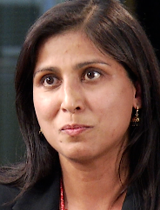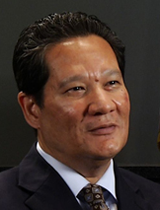Community colleges are on the cutting edge of the 21st century economy by providing the skills needed in the new workplace, said an educator and a public policy expert.
 Sapna Gupta, senior policy analyst, Morrison Institute for Public Policy.
Sapna Gupta, senior policy analyst, Morrison Institute for Public Policy."Community colleges work very closely with businesses and employers in determining what kinds of courses they should be offering," said Sapna Gupta, senior policy analyst with the Morrison Institute for Public Policy at Arizona State University. "They do keep a finger on the pulse of different sectors of industries to see what their needs are."
Despite that, Gupta said in an interview for Friday's Arizona Week broadcast, there is a "skills gap" that means 49 percent of employers nationally say they cannot find the talent they need to fill openings.
"In some cases, filling that skills gap ... is a challenge, and it's a challenge community colleges are doing their best to fill," she said.
The gap presents an opportunity for those seeking employment, and Gupta said focusing on the skills needed to get a job is more important in the new economy than attaining a college degree.
"In today's economy, it's not necessarily the length of time you spent after high school in post-secondary education," she said. "It's not necessarily whether you went to a two-year institution or a four-year institution. It's what kind of skills did you acquire. ... and how is it relevant to today's workplace."
 PCC Chancellor Lee Lambert.
PCC Chancellor Lee Lambert.Pima Community College Chancellor Lee Lambert said community colleges are working to provide the opportunities for such training.
“We’re perfectly positioned to help power the labor force for that modern era of manufacturing, of servicing, etc.," Lambert said in an Arizona Week interview. "When you think about it from that standpoint, there are more jobs in that middle tier than in that upper tier.”
Yet, while there is significant movement in the right direction, he said, one worry is that faculty turnover is not being addressed adequately.
"Our faculty is aging just like our business and industry partners' workforces are aging," he said. "So how are we going to find the next generation of faculty to come in and take the place of our existing faculty, who've done a magnificent job of bringing us to this point."
"The faculty are the key here," he said. "If you don't have them, we're going to have a breakdown in our training capacity. I think it's a real challenge right now, and I don't think we're talking about it enough."

By submitting your comments, you hereby give AZPM the right to post your comments and potentially use them in any other form of media operated by this institution.